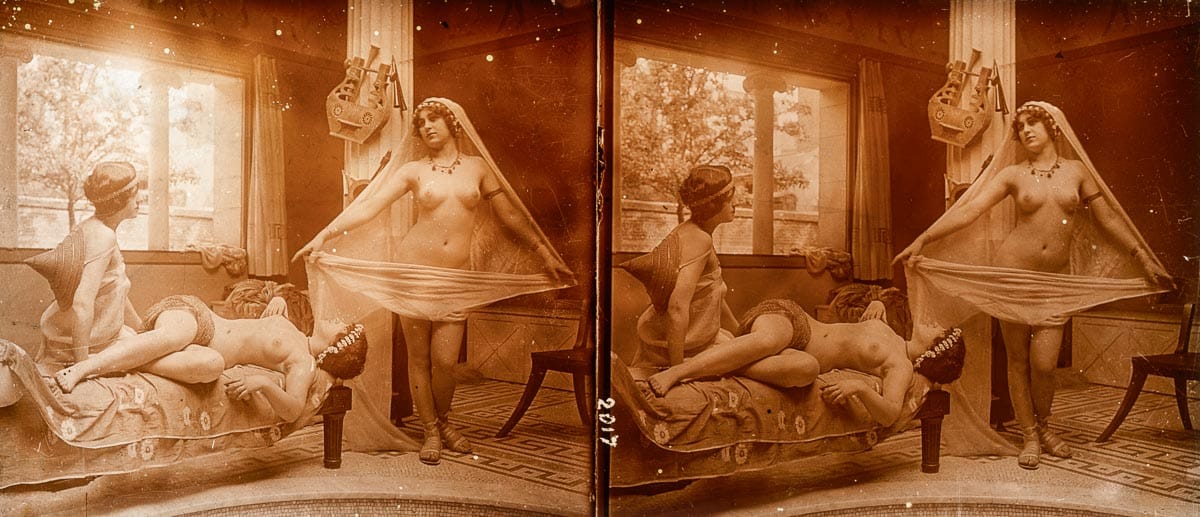
An interesting example of early image piracy. This 13 x 18 cm glass plate contains the negatives of three 6 x 13 cm stereoviews with semi nude models that were made in Jules Richard’s atrium. It is unlikely that these negatives were used by a publisher. The shown images contain different numbers, which are not consecutive and, one image of another glass plate in the collection is printed upside down. It’s more likely that the owner of the stereoviews made contact prints of his images on a negative glass plate with the intention to clandestinely copy and sell the images.
The next image shows the stereoview of the first image on the large negative plate. A similar copy was used to make the contact print. The used number on the slide indicates that this 6 x 13 cm stereoview was not sold by Jules Richard, but by another (unknown) publisher.

Image piracy in the early days of photography was a significant issue, much as it is today. There were no robust copyright laws protecting photographic images. This allowed for widespread copying and distribution of photographs without permission from or compensation to the original photographer. It wasn’t until photographers began to push for legal protections that laws started to evolve, but this process was slow and varied significantly by country.
